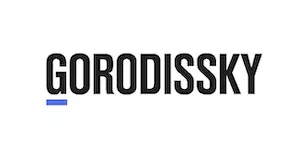Duration of a patent has long been a concern of each individual country. Ever since Filippo Brunelleschi invented in the 15th century a barge with hoisting gear and secured an exclusive privilege for three years for the use of same, the validity term of patents varied widely, until the WTO's TRIPs in modern times sought to harmonize national laws and set the term of twenty years. Article 33 of the TRIPs Agreement provided that "The term of protection available [for patents] shall not end before the expiration of a period of twenty years counted from the filing date". This agreement streamlined the duration of patents in many countries.
As time went on, it became clear, however, that inventions for pharmaceuticals, agrochemicals and pesticides were an unloved child of intellectual property. The said patented chemical products need to obtain regulatory approval before they can go to the market. This may take years, thus shortening the duration of the patent and putting at a disadvantage patents in the chemical field.
To meet this challenge, some countries introduced a "patent term extension". In Russia, this took place in 2003 and the relevant provision was retained in all subsequent versions of the patent Law. The patent Law became part of the Civil Code as its Part IV in 2008. In 2014, the relevant provision was complemented in that a supplementary patent should be issued covering the extension period instead of an attachment to the existing patent.
In accordance with the amended patent legislation, a patent term extension is certified by a supplementary patent granted with the claims containing the combination of the features of the patented invention characterizing the product for which the marketing authorization has been issued.
This becomes a new patent with the revised claims and with the restricted scope of rights. The claims will characterize a specific product for the use of which the first marketing authorization was obtained. The said product is an active agent or a composition/combination of ingredients of the product that has undergone clinical trials and is permitted for use in Russia.
The procedure for patent term extension is regulated by Article 1363(2) of the Civil Code. It reads: "If from the filing date of an application for the grant of a patent for an invention relating to a medicine, a pesticide, or an agrochemical, the use of which requires a statutory approval to the date of granting the first marketing approval more than five years passed, the duration of the exclusive right to the respective invention and the patent certifying this right shall be extended upon request of the patent holder by the federal executive authority for intellectual property".
The said term shall be extended for the period from the date of filing the patent application until the date of issue of first marketing authorization minus five years but for not more than five years.
The request for the extension of term is to be made by the patent owner during the period of validity of the patent before expiration of six months from the date when the first marketing authorization was obtained or from the date of grant of the patent depending on which term expires later.
This extension provision proved to be quite workable and hundreds of patents were extended without a hitch. There have been published a number of articles on extension of patents in this country, though for the most part they make it known that extension is possible and describe the procedure of how the patent owner may obtain extension. Sometimes the procedure is not that smooth. It is worthwhile to have a look at a snag encountered by one of the patent owners.
Gilead Pharmasset LLS, a US company, obtained patent No 2651892 dated 24 April 2018.
In June 2018, Gilead Pharmasset LLS applied to the patent office with a request to extend the term of validity of the patent but was refused. The applicant filed a complaint to the patent office against that decision but was refused again.
After that the company initiated a court action at IP court against the patent office seeking to overturn the negative decision of the patent office (case No СИП-740/2018).
The company argued that the disputed decision of the patent office is in contravention of Article 1363(2) of the Civil Code (see above).
It noted that marketing authorization had been obtained for the medicine Sofosbuvir. The patent office should have determined that the scope of protection according to independent Claim 1 corresponds to that medicine. This was not done by the patent office. The company argued that Sofosbuvir completely falls within the scope of independent Claim 1 as acceptable and possible alternative of the claimed compounds because Claim 1 covers Isopropyl Ester of Propionic Acid (Sofosbuvir) or its stereoisomer. This alternative is fully supported by the specification of the patent.
The patent office refused to accept that explanation, arguing that the active ingredient shown in the marketing authorization is not identical to the compound disclosed in Claim 1. The marketing authorization indicates that the active ingredient in the medicine is Sofosbuvir, a S-stereoisomer of propionic acid. In the meantime, the claim gives the same compound or its stereoisomer without indicating specifically what stereoisomers are meant.
In this connection, the patent office concluded that Sofosbuvir represents a particular stereoisomer characterized in Claim 1 and it is not identical to the active ingredient given in the marketing authorization. Because of this, extension of term of patent No 2651892 cannot be allowed.
In addition to that, the patent office argued that S-stereoisomer covered by the scope of Claim 1 is not specifically disclosed in the specification; the specification does not show that the compound was really produced and that it possesses the same activity that would allow the use as intended.
The IP court examined the arguments of both sides and stated that the patent office's decision is not based on law. According to the IP court the scope of protection of the invention according to Claim 1 extends to any stereoisomer of the composition, including to Sofosbuvir which is a S-stereoisomer. In fact, the scope of protection covers S- as well as R-stereoisomers.
The company did not ask for extension of all possible alternatives in Claim 1 but only in respect of a specific S-stereoisomer of compound, i.e. in respect of Sofosbuvir. The patent office does not deny that the combination of features proposed by the company is identical to the chemical formula of Sofosbuvir. The patent office does not deny that the combination of features proposed by the company is identical to the chemical formula of Sofosbuvir.
Thus, Sofosbuvir falls within the scope of protection of the invention in Claim 1, specifically in the part of the feature termed as "or its stereoisomer" as its admissible alternative.
The law does not impose limitations on the extension of patents' validity in respect of patent claims if these claims are constructed with the use of alternative concepts. Also, requirements to the patent documents provide that one independent claim may characterize several inventions-variants if they differ only by the features expressed as alternatives.
Furthermore, Rule 46 of Patent Regulations provides that when a group of inventions is being examined patentability is checked in respect of each invention. If a claim contains a feature expressed by several alternatives each combination of features should be checked. From this it follows that one claim may contain one combination of features or several combinations.
There are other rules that echo the above citations and all of them teach that a claim may be expressed through alternatives and each alternative may represent a separate combination of features of the invention.
Those rules were not respected by the patent office.
The specification of the patent reads that there are two possible stereoisomers: S-stereoisomer as well as R-stereoisomer which is reflected in Claim 1 by the words "or its stereoisomer".
Hence, the combination of features defining the scope of protection characterizing a compound or a group of compounds described by general structural formula should be the same as the active ingredient of the pharmaceutical and it may refer to the whole claim as well as to a specific combination of features if the claim contains several combinations of features (alternatives) and only one of the combinations shown in the feature corresponds to the active ingredient.
There is a similar approach demonstrated by the Presidium of IP court in case No СИП-155/2014. Different interpretation of the regulations would entail unjustified impingement of rights of the patent owners because, as was mentioned above, there are no limitations for that in the law.
Another ground of refusal put forward by the patent office was that the patent office indicated that S-stereoisomer mentioned in Claim 1 is not disclosed, i.e. the specification does not show that the compound was indeed obtained and possesses the activity allowing it to use as claimed.
The court did not agree with this statement either. Contrary to assertions of the patent office isopropyl ester of propionic acid is disclosed in the specification, there is information to the effect that such composition was obtained and possesses the claimed activity.
Obtainment of such derivatives (stereoisomers) is a standard procedure; it is evident for the person skilled in the art that they maintain their properties and activity. Hence, obtainment of such derivatives without mentioning a specific example is a necessary and sufficient condition for that group of compositions to be protected.
The IP court put forward several other arguments proving that the decision of the patent office was not based on law and regulations and obliged the patent office to reconsider its decision and extend the validity term of the invention and issue a supplementary patent.
The above case is very much demonstrative of the skills of the judges of the IP court. The rules allow the court to engage experts in complicated cases however in this case the judges showed that they themselves are competent enough to examine complex chemical cases.
The content of this article is intended to provide a general guide to the subject matter. Specialist advice should be sought about your specific circumstances.

